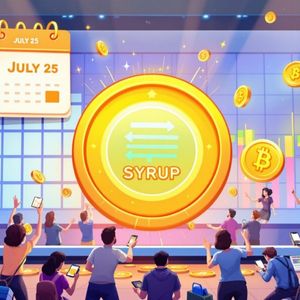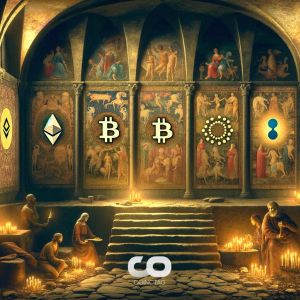BitcoinWorld Tron Transaction Fees Plummet 70%: A Game-Changer for Network Efficiency Imagine a world where your digital transactions cost significantly less, making everyday crypto interactions smoother and more affordable. For users and developers on the Tron network, this isn’t just a dream – it’s a rapidly unfolding reality. Recent data reveals a staggering 70% drop in Tron transaction fees , a development poised to reshape how we interact with decentralized applications and digital assets. Since the rollout of its innovative ‘Gas-Free’ feature in early 2025, the Tron network has witnessed its average weekly transaction fee plummet from 2.47 TRX to a mere 0.72 TRX. This dramatic reduction, highlighted by Lookonchain on X, citing data from Nansen, signals a monumental shift towards a more accessible and user-friendly blockchain ecosystem. But what exactly does this mean for the future of decentralized finance and beyond? Understanding Tron Transaction Fees : What Changed? Before diving into the implications of this fee reduction, it’s essential to understand the mechanics behind Tron transaction fees . Traditionally, most blockchain networks, like Ethereum, operate on a ‘gas’ model, where users pay a variable fee (in the network’s native token) for every operation they perform, from sending tokens to executing smart contracts. This fee compensates network validators for processing transactions and securing the blockchain. Tron, while also requiring resources for transactions, employs a slightly different model based on ‘Energy’ and ‘Bandwidth’. Bandwidth: Primarily consumed for standard transactions like sending TRX or TRC-20 tokens. It represents the size of the transaction in bytes. Energy: Required for executing smart contract operations, which are more computationally intensive. Users can obtain these resources in two primary ways: either by ‘freezing’ (staking) their TRX tokens, which grants them a certain amount of Energy and Bandwidth daily, or by paying a small fee in TRX if they don’t have enough frozen resources. The recent ‘Gas-Free’ feature enhances the efficiency of resource utilization, leading directly to the observed drop in costs. The Innovative ‘Gas-Free’ Feature: How Does It Drive Down Costs? The ‘Gas-Free’ feature, implemented by the Tron DAO, isn’t about making transactions entirely without cost, but rather about optimizing resource consumption and making it virtually free for many typical users. It’s a strategic enhancement designed to alleviate the burden of fluctuating transaction costs that plague other networks. Here’s how it works: Enhanced Resource Allocation: The system intelligently allocates bandwidth and energy to users who have staked TRX, ensuring that common transactions and smart contract executions can often be performed without directly consuming TRX from their wallet for fees. Increased Free Quotas: For standard transactions, users receive a daily free bandwidth quota. The ‘Gas-Free’ initiative likely optimized this allocation, making it more robust for everyday use. Developer-Friendly Subsidies: In some cases, decentralized applications (dApps) can choose to subsidize transaction fees for their users, making the user experience seamless and truly ‘free’ from their perspective. The new feature facilitates this by making the underlying resource costs for developers more predictable and lower. Efficiency Improvements: Underlying network optimizations have reduced the computational cost of certain operations, meaning less Energy and Bandwidth are consumed per transaction. This approach positions Tron as a highly competitive network, especially for applications requiring frequent, low-value transactions, or for users who are sensitive to transaction costs. It’s a clear move towards mass adoption by removing a significant barrier to entry. Unpacking the 70% Drop: What Does This Mean for Users and Developers? A 70% reduction in average weekly Tron transaction fees is not just a statistic; it’s a paradigm shift with profound implications across the ecosystem: For Everyday Users: Unlocking New Possibilities Affordable Micro-Transactions: Sending small amounts of TRX or TRC-20 tokens becomes incredibly cheap, facilitating everyday payments and remittances. Enhanced DApp Interaction: Users can interact with decentralized applications more frequently without worrying about prohibitive fees for every click or action. This encourages exploration and deeper engagement with the Tron DeFi and GameFi ecosystems. Improved User Experience: Predictable and low costs reduce friction, making the blockchain feel less like a complex financial tool and more like a seamless digital service. For Developers: A Fertile Ground for Innovation Lower Operational Costs: Developers building dApps on Tron can now operate with significantly reduced overheads related to user transaction fees, potentially leading to more profitable and sustainable projects. Increased User Adoption: Lower fees directly translate to higher user adoption rates, as more people are willing to try and stick with applications that don’t drain their wallets with hidden costs. Experimentation and Scalability: The reduced cost barrier encourages developers to experiment with more complex smart contracts and features, knowing that their users won’t be deterred by high fees. This fosters innovation and scalability on the network. This substantial drop positions Tron as an even more attractive blockchain for a wide array of use cases, from stablecoin transfers (Tron hosts the largest USDT supply) to gaming and social dApps. Challenges and Considerations: Is it Truly ‘Free’? While the term ‘Gas-Free’ is appealing, it’s important to approach it with a nuanced understanding. As mentioned, transactions still consume network resources (Bandwidth and Energy). The ‘free’ aspect largely comes from the ability to stake TRX to obtain these resources, or from dApps subsidizing fees. Potential Considerations: Staking Requirement: To truly benefit from the ‘free’ transactions, users often need to hold and stake a certain amount of TRX. This might still be a barrier for absolute newcomers who don’t own TRX. Resource Depletion: While optimized, heavy network usage by a single entity or a surge in network activity could still lead to temporary resource depletion, potentially requiring users to ‘burn’ TRX for immediate transactions if their staked resources are insufficient. Centralization Concerns: Some critics argue that Tron’s delegated proof-of-stake (DPoS) model, where a limited number of Super Representatives validate transactions, carries centralization risks. While not directly related to fees, it’s a broader network characteristic often discussed. Despite these points, the 70% reduction in average fees undeniably makes Tron significantly more cost-effective and user-friendly compared to many alternatives. Impact on the Broader Crypto Ecosystem: Will Others Follow Tron’s Lead? Tron’s success in drastically reducing Tron transaction fees sets an interesting precedent for the broader blockchain industry. High gas fees have long been a bottleneck for mass adoption, particularly for networks like Ethereum, where simple transactions can sometimes cost tens or even hundreds of dollars during peak congestion. While different blockchains have varying architectural designs and consensus mechanisms, Tron’s model offers a compelling case study. Other Layer 1 blockchains and even Layer 2 solutions are constantly striving to reduce transaction costs and improve scalability. Tron’s ‘Gas-Free’ feature, by optimizing resource management and encouraging staking for resource acquisition, could inspire similar innovations across the board, pushing the entire industry towards more efficient and user-centric designs. Actionable Insights for Tron Users and Developers For those already involved with Tron or considering it, here are some actionable insights: For Users: Stake TRX: To maximize your ‘Gas-Free’ experience, consider freezing a portion of your TRX holdings to gain daily Bandwidth and Energy. This is the most effective way to minimize direct transaction costs. Explore DApps: With lower fees, now is an excellent time to explore the diverse range of dApps on Tron, from DeFi protocols to gaming platforms, without worrying about prohibitive costs. For Developers: Optimize Smart Contracts: Even with lower fees, efficient smart contract code will always be beneficial, reducing resource consumption and ensuring smooth operation. Consider Fee Subsidies: If feasible for your dApp, consider implementing mechanisms to subsidize user transaction fees. This can significantly boost user acquisition and retention on the Tron network. Conclusion: A New Era of Affordability for Tron The monumental 70% drop in average weekly Tron transaction fees is a testament to the network’s commitment to accessibility and efficiency. By strategically implementing its ‘Gas-Free’ feature, Tron has not only made its ecosystem more attractive for both users and developers but has also set a new benchmark for affordability in the blockchain space. This development is not just about cheaper transactions; it’s about fostering an environment where innovation can thrive unhindered by prohibitive costs, paving the way for broader adoption of decentralized technologies. As the crypto landscape evolves, Tron’s proactive steps towards reducing fees highlight a crucial path forward for the entire industry. Frequently Asked Questions (FAQs) Q1: What does ‘Gas-Free’ mean on Tron if I still need TRX? A: ‘Gas-Free’ on Tron means you don’t directly pay a fee in TRX for every transaction like on some other networks. Instead, you consume ‘Bandwidth’ and ‘Energy’ resources. You can obtain these resources by ‘freezing’ (staking) your TRX, which grants you a daily quota. If you don’t have enough frozen resources, you’ll pay a small amount of TRX, but the goal is to make common transactions ‘free’ for those who stake. Q2: How does the 70% fee drop impact the value of TRX? A: While lower fees generally make a network more attractive, the direct impact on TRX value is complex. Increased network utility and adoption due to lower fees could lead to higher demand for TRX (especially for staking). However, reduced ‘burning’ of TRX for fees might also be a factor. The overall impact depends on various market dynamics. Q3: Is Tron now the cheapest blockchain for transactions? A: Tron has become one of the most cost-effective blockchains for transactions, especially for stablecoin transfers and dApp interactions, due to its optimized resource model and the recent fee reduction. However, ‘cheapest’ can vary based on specific transaction types and network congestion across different chains. Q4: How can I benefit from the lower Tron transaction fees as a new user? A: As a new user, the easiest way to benefit is to acquire some TRX and ‘freeze’ a portion of it to gain Bandwidth and Energy. This will allow you to perform most basic transactions without directly paying fees. You can also explore dApps that might subsidize transaction costs for their users. Q5: What are the primary sources for the data on Tron’s fee drop? A: The information regarding Tron’s 70% fee drop was reported by Lookonchain on X, citing data compiled from Nansen, a leading blockchain analytics platform known for its comprehensive on-chain data insights. Did you find this article insightful? Share it with your friends and fellow crypto enthusiasts on social media to spread the word about Tron’s remarkable achievement in reducing transaction costs! To learn more about the latest crypto market trends, explore our article on key developments shaping blockchain technology and its institutional adoption. This post Tron Transaction Fees Plummet 70%: A Game-Changer for Network Efficiency first appeared on BitcoinWorld and is written by Editorial Team














